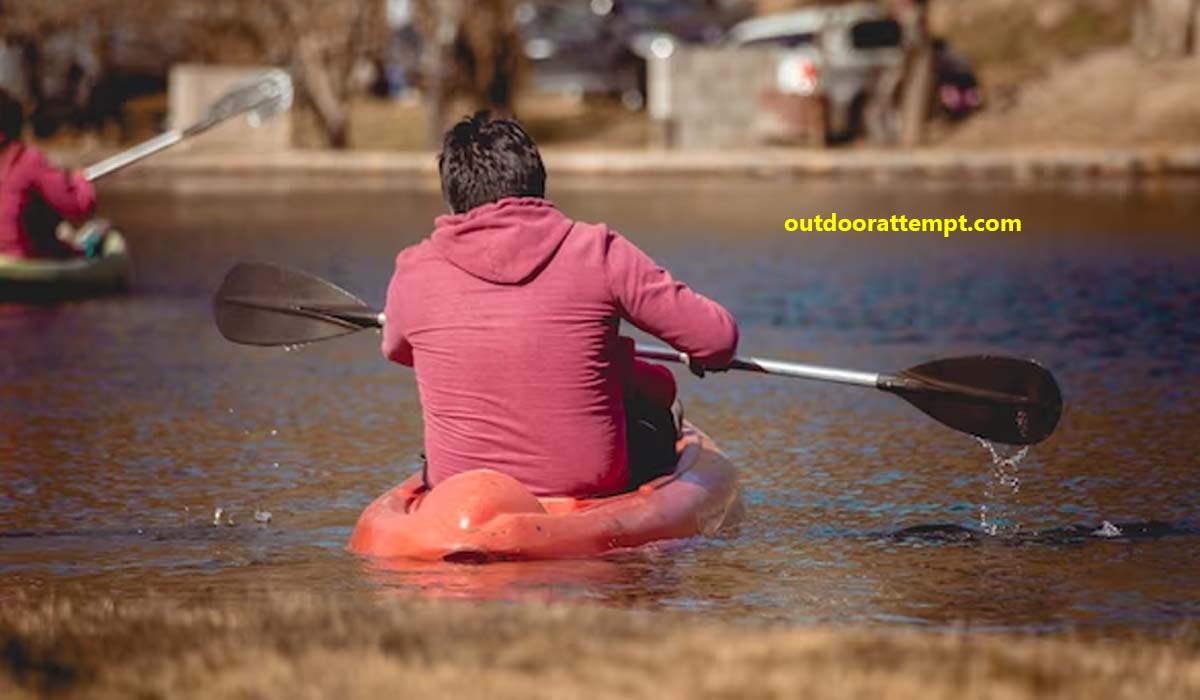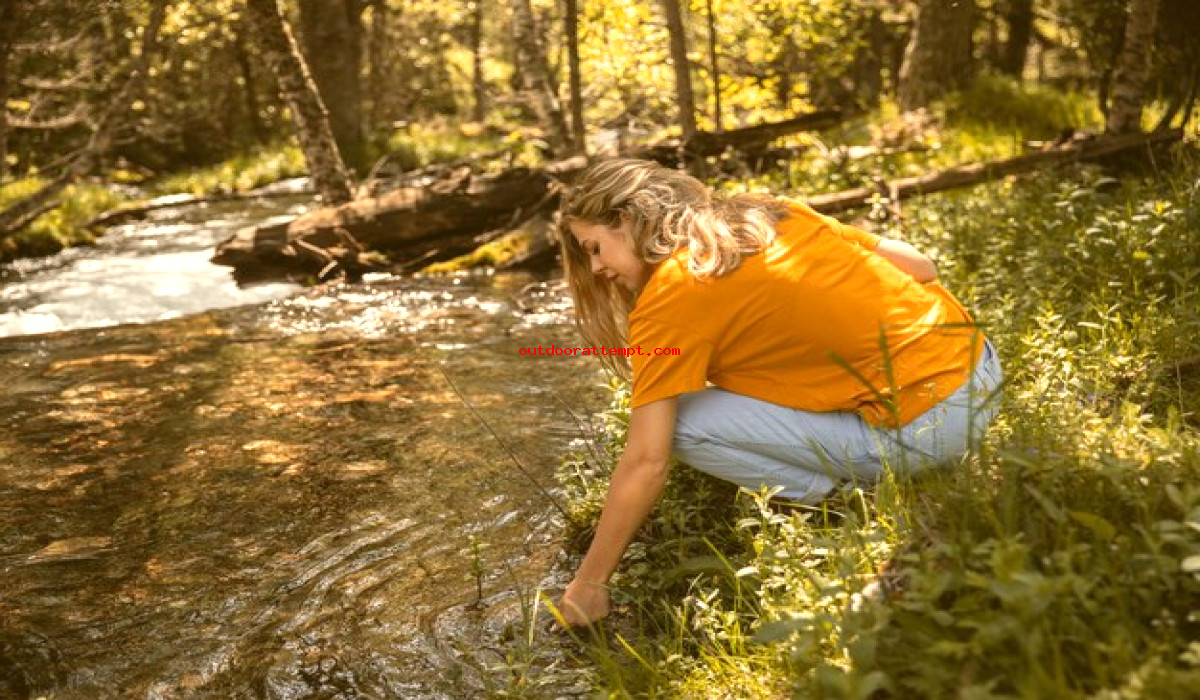Surviving Nature’s Fury: Battling the Elements Under a Tarp – Rain, Floods, and Campfire Cooking
no one can control the forces of nature, but you can be prepared for when they strike.
In “Surviving Nature’s Fury: Battling the Elements Under a Tarp,” you’ll learn how to stay safe and dry when the weather takes a turn for the worse. You’ll also get tips on how to cook under difficult conditions, using only a campfire.
Tarp Camping in the Rain: Stay Dry and Stay Safe
Going camping in the rain can be wet, cold, and miserable. But, with the right gear and a little bit of know-how, you can make the most of a rainy camping trip. Here are a few tips on how to stay dry and safe while camping under a tarp in the rain.
Choose the Right Tarp
When it comes to camping in the rain, choosing the right tarp is essential. A tarp that is too small will not provide enough coverage, and a tarp that is too large will be difficult to set up and take down. For a one-person tarp, a 8×10 tarp is a good size. For a two-person tarp, a 10×12 tarp is a good size.
Set Up Your Tarp
When setting up your tarp, make sure to angle the tarp so that the rain runs off of the tarp and not into your campsite. To do this, tie one end of the tarp to a tree, and stake the other end of the tarp to the ground. If you have a two-person tarp, have one person hold up the middle of the tarp while the other person stakes the corners.
Create a Dry Campsite
Once your tarp is set up, it’s time to create a dry campsite. Start by putting your sleeping pad and sleeping bag under the tarp. Then, set up your camp stove under the tarp and put your cookware and food inside the tarp. If you have a vestibule on your tarp, you can use it to store your wet gear, such as your raincoat and boots.
Stay Warm and Dry
To stay warm and dry while camping in the rain, dress in layers. Wear a base layer of wool or synthetic fabric to wick away sweat. Add a middle layer of fleece or down for insulation. And, top it off with a waterproof outer layer. If you get too warm, you can always take off a layer. And, if you get too cold, you can always put on a layer.
Enjoy the Rain
Just because it’s raining doesn’t mean you can’t enjoy yourself. There are plenty of activities you can do in the rain, such as hiking, fishing, and playing cards. So, don’t let the rain ruin your camping trip. Embrace it and have fun.
The Impact of Surviving Nature’s Fury:
Battling the Elements Under a Tarp – Rain, Floods, and Campfire Cooking
For those who love spending time outdoors, nothing can be more frustrating than being forced to take shelter from bad weather. But when the weather takes a turn for the worse, it’s important to be prepared.
One way to be prepared for bad weather is to have a tarp on hand. Tarps can be used for a variety of purposes, including rain protection, flood protection, and even campfire cooking.
Rain Protection
One of the most obvious uses for a tarp is rain protection. If you’re caught in a rainstorm, a tarp can be used to create a makeshift shelter. All you need is a few stakes and some rope, and you can have a safe, dry place to take cover.
Flood Protection
If you’re camping near a river or lake, a tarp can also be used to protect your campsite from flooding. Floods can happen unexpectedly, so it’s always a good idea to be prepared. By staking a tarp around your campsite, you can help keep your belongings safe and dry.
Campfire Cooking
A tarp can also be used for campfire cooking. If you build a fire under a tarp, you can cook dinner even in the rain. Just be sure to keep the tarp well away from the flames.
No matter what your plans are, it’s always a good idea to have a tarp on hand. You never know when you might need it.
Surviving Nature’s Fury: Battling the Elements
According to the National Oceanic and Atmospheric Administration (NOAA), the number of billion-dollar weather and climate disasters in the United States has quadrupled since 1980. From 1980 to 2019, the United States experienced 217 weather and climate disasters where overall damages/costs reached or exceeded $1 billion ( inflation-adjusted to 2019).
Of these 217 events, 106 were inland flooding events, 62 were severe storms (tornadoes, hurricanes, or winter storms), 31 were hurricanes, 14 were drought events, 10 were wildfires, 8 were winter storms, and the remaining 6 were Hickory Wind, straight-line winds, and tropical cyclones.
The estimated cost of these 217 events exceeds $1.6 trillion dollars. Coastal storms, such as hurricanes and nor’easters, can cause damage from high winds, storm surge, and flooding rains. Storm surge is the unusual rise of water generated by a hurricane or tropical storm. Just one inch of floodwater can cause $27,000 in damage to your property.
Federal Emergency Management Agency
The Federal Emergency Management Agency (FEMA) offers a few different types of flood insurance, but the two most common are through the National Flood Insurance Program (NFIP) and policies offered by private insurers. According to the Insurance Information Institute, as of June 2019, the NFIP insures nearly 5 million properties nationwide at a cost of about $3.5 billion in premiums per year.
Floods are the most common natural disaster in the United States. They can happen anywhere, anytime, and to anyone. Many areas of the country are more prone to flooding than others, but even if you live in a low-risk area, you’re not immune. In fact, floods are the number one natural disaster in the United States, causing billions of dollars in damage every year.
There are many ways to prepare for a flood. You can purchase flood insurance, elevate your home or business, or install flood barriers. You can also create an emergency kit and a family communication plan.
One of the best ways to protect your property from flooding is to purchase flood insurance. Flood insurance is available through the National Flood Insurance Program (NFIP) and private insurers.
Flood insurance covers the cost of repairing or rebuilding your home or business after a flood. It also covers the cost of replacing damaged personal belongings.
High-risk area
If you live in a high-risk area, you’re required to purchase flood insurance if you have a mortgage from a federally regulated or insured lender. If you live in a low- or moderate-risk area, flood insurance is optional but highly recommended.
Even if you don’t live in a high-risk area, you may still be required to purchase flood insurance if you have a federally backed mortgage.
Elevating your home or business is another way to protect it from flood damage. Elevating means raising your home or business above the base flood elevation (BFE).
The BFE is the predicted water level of a flood. It’s determined by factors such as the topography of the land, the amount of rainfall, and the location of nearby waterways.
Elevating your home or business can be costly, but it’s often less expensive than the cost of repairing or rebuilding after a flood.
Surviving Nature’s Fury: Battling the Elements
If you can’t or don’t want to elevate your home or business, you can install flood barriers. Flood barriers are temporary barriers that can be placed around your property to protect it from floodwaters.
There are many different types of flood barriers, including sandbags, temporary walls, and temporary levees. Flood barriers can be purchased or rented from a variety of companies.
Creating an emergency kit is another way to prepare for a flood. An emergency kit should include enough food, water, and supplies to last at least 72 hours.
Your emergency kit should also include a first-aid kit, a battery-operated or hand-crank radio, a flashlight, and extra batteries. You should also include a list of important phone numbers, copies of important documents, and cash.
A family communication plan is another important part of preparing for a flood. A family communication plan should include a list of emergency contacts and a meeting place.
You should also choose someone who lives out of state to be your family’s emergency contact. This person can be a trusted friend or family member.
You should also have a plan for getting to your meeting place if you can’t reach each other by phone.
There are many things you can do to prepare for a flood. Purchasing flood insurance, elevating your home or business, and installing flood barriers are all effective ways to protect your property from flood damage.
You can also protect your property by creating an emergency kit and a family communication plan.

1. What are the most important things to remember when surviving nature’s fury?
Important things to remember when surviving nature’s fury
1. Stay calm and avoid panic.
2. Pay attention to your surroundings and be aware of your surroundings.
3. Try to find shelter from the elements, such as a sturdy building or a vehicle.
4. If you are outdoors, find a spot that is away from trees, power lines, and bodies of water.
5. If you are in a vehicle, pull over to the side of the road and stay in your car.
6. Be prepared for power outages and have a plan for how you will stay warm and have light.
7. Have a plan for how you will communicate with family and friends.
8. Check on your neighbors, especially those who are elderly or have young children.
9. Be aware of flooding and flash flooding. Do not attempt to drive through flooded areas.
10. Do not camp or cook near wildfire flames.
Tarp camping is a great way to enjoy the outdoors while being prepared for whatever Mother Nature might throw your way. However, there are some limitations to tarp camping that you should be aware of before heading out into the wild.
Surviving Nature’s Fury: Battling the Elements
One of the biggest limitations of tarp camping is the lack of protection from the elements. While a tarp can provide some shelter from the rain and sun, it will not protect you from the wind or cold. If you are camping in an area where the weather is unpredictable, you may want to consider bringing along a tent or other form of shelter.
Another limitation of tarp camping is the lack of privacy. If you are camping with others, you will need to be comfortable with the fact that they will be able to see you. If you are camping in an area where there are no other people around, you may want to consider bringing along a privacy screen.
Finally, tarp camping can be a bit more challenging when it comes to cooking and staying warm. If you are camping in an area where it is not possible to build a fire, you will need to bring along a portable stove. Additionally, you may want to bring along extra blankets or sleeping bags to make sure you stay warm at night.
Despite the limitations, tarp camping can be a great way to enjoy the outdoors. By being prepared for the challenges, you can make sure you have a safe and enjoyable experience.
